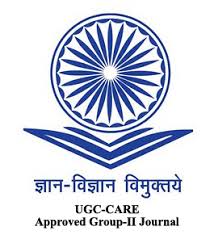Analysis of Morphological, Physiological and Biochemical traits for grain quality and yield in Basmati rice accesions
DOI:
https://doi.org/10.63001/tbs.2025.v20.i02.S2.pp121-128Keywords:
Aromatic rice, Morphological characteristics, biochemical characteristics, Physiological characteristics, Grain qualityAbstract
The knowledge of the extent and pattern of diversity in the crop species is a prerequisite for any crop improvement as it helps breeders in deciding suitable breeding strategies for their future improvement. Rice is the most important staple food crop among the cereals and feeds more than half of the world’s population. The wide variety of rice grains, each with its distinct characteristics whether it is size, texture or color ensures that the rice continues to hold a significant place in diverse culinary traditions. As population grows and culinary traditions, rice will remain a wide food source with diverse taste. Therefore, the present study was undertaken with the aim to characterize and assess trends of diversity in a large set of Indian rice genotypes. Fifty germplasm of rice were taken in the experiment which belongs to basmati group. The Basmati rice genotype was collect from ACRIP-Rice, Nagina Research Centre Bijnor U.P. The analysis of 50 rice genotypes reveals that Basmati 5836-E, Basmati 5874-B, and Basmati 5836-C, Basmati 5874-A excel in morphological parameters highlighting the diverse strengths of these genotypes in rice cultivation. Basmati 372-A-E, Basmati 372-A-F, and Basmati 372-A-G, Basmati-375-F excelled in biochemical parameters Basmati-5875-E had the highest chlorophyll content, showcasing the superior performance of specific Basmati genotypes in key agricultural parameters. Diversity is prerequisite for any crop improvement program as it helps in the development of superior recombinants. Diversity offers a range of selections to breeders that may produce superior rice varieties and contribute to targeted crop improvement. The present study aimed to assess the diversity of aromatic rice genotypes and the obtained knowledge which could be utilized further in breeding programme for crop improvement. It will be important in the future of plant breeding as it helps develop crops that can adapt to climate change, agronomical traits, higher yield, speed flower over different aspects and meet food demand with sustainable agriculture.






























